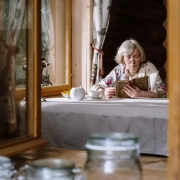How do I handle aged care fees if I don’t own a home?
Table of Contents
ToggleMaking decisions about aged care can be overwhelming, especially when you don’t own a home. This situation presents unique financial challenges, and understanding your options is crucial for navigating this important life stage with confidence.
Many Australian seniors choose not to own a home, and that’s perfectly valid. However, it’s crucial to acknowledge that aged care fees can often include an “accommodation payment” on top of daily care costs. This payment is based on your assets, and without the value of a home, it can raise concerns.
This blog post aims to break down the different types of aged care fees, explore government assistance programs available to non-homeowners, and discuss strategies for managing costs effectively.
Understanding Aged Care Fees
When it comes to aged care in Australia, understanding the fees involved is crucial. Here’s a straightforward breakdown, especially for those without homeownership:
Daily Care Fee
Think of this as the everyday cost of your care, covering things like nursing, meals, and activities. Thankfully, the Australian Government subsidises a large portion of this fee, offering some relief. But remember, this subsidy is the same for everyone, regardless of homeownership.
Accommodation Payment
This is where things get a bit more complex. This payment covers the cost of your room and board within the aged care facility. Now, here’s the key point: the amount you pay is determined by your assets, including the value of your home. Since you don’t own a home, you won’t have that specific asset impacting your payment.
NOTE: This doesn’t mean you avoid the accommodation payment altogether. Instead, your other assets, like savings, investments, and superannuation, will be considered when determining the fee. Remember, transparency is key! You’ll receive a Detailed Assessment Statement outlining your exact contribution based on your financial situation.
Different Accommodation Options
- RAD (refundable deposit): You pay a lump sum upfront, refunded when you leave (conditions apply).
- DAP (daily payment): You pay a daily fee for your accommodation.
Choosing the Right Option
Choosing between RAD and DAP depends on your individual circumstances and financial goals. Seeking professional advice is crucial to navigate this decision confidently.
Financial Assistance for Non-Homeowners
Navigating aged care costs without homeownership can feel daunting, but rest assured, there are avenues for support! Here’s an overview of key assistance programs available to you in Australia:
Means Assessment
This assessment, conducted by Services Australia or the Department of Veterans’ Affairs (DVA), evaluates your income and assets to determine your eligibility for government assistance. The good news? Not owning a home can actually work to your advantage, as the assessment won’t include its value.
Financial Hardship Assistance
If the means assessment reveals financial hardship, you may qualify for additional support. This assistance can help reduce your accommodation payment, making aged care more affordable. Remember, eligibility criteria apply, so be sure to check the My Aged Care website or inquire with Services Australia/DVA for details.
Other Government Programs
Several government programs can offer broader financial support:
- Aged Pension: Provides income support for eligible seniors.
- Pension Loans Scheme: Allows accessing part of your superannuation as a loan to meet aged care costs.
- Carer Payment: Offers financial assistance to those caring for a loved one at home.
It’s crucial to research and understand the eligibility criteria and application process for each program. Seeking professional guidance from an aged care specialist or financial advisor can simplify this process and ensure you access all available support.
Strategies for Managing Costs
Planning for aged care without a home requires strategic thinking and informed choices. Here are some effective ways to manage costs:
Explore Alternative Care Options
- Home Care Packages: Government-funded support for care in your own home, potentially reducing the need for residential care.
- Respite Care: Short-term stays in residential care facilities, offering temporary breaks for caregivers.
- Community Care Services: Meals on wheels, social outings, and other services can supplement home care.
Consider Downsizing Assets
- Reverse Mortgages: Accessing home equity (if applicable) while remaining in your home.
- Selling Valuable Belongings: Carefully consider non-essential items you could sell to generate funds.
Utilise Superannuation
- Superannuation Income Stream (SIS): Converting super into a regular income stream for aged care costs.
- Downsizer Contribution: Contributing unused superannuation space when downsizing your home (if applicable).
Family Support (Optional)
- Open communication with family members about potential contributions is crucial.
- Seek legal and financial advice to ensure transparency and fairness.
Every situation is unique. Consulting a qualified financial advisor specialising in aged care is essential to explore these options in detail and create a personalised plan that fits your circumstances.
Planning for aged care without owning a home can seem daunting, but remember, you’re not alone. By understanding the system, exploring available options, and seeking professional guidance, you can navigate this journey with confidence and peace of mind.









